This Dr. Axe content is medically reviewed or fact checked to ensure factually accurate information.
With strict editorial sourcing guidelines, we only link to academic research institutions, reputable media sites and, when research is available, medically peer-reviewed studies. Note that the numbers in parentheses (1, 2, etc.) are clickable links to these studies.
The information in our articles is NOT intended to replace a one-on-one relationship with a qualified health care professional and is not intended as medical advice.
This article is based on scientific evidence, written by experts and fact checked by our trained editorial staff. Note that the numbers in parentheses (1, 2, etc.) are clickable links to medically peer-reviewed studies.
Our team includes licensed nutritionists and dietitians, certified health education specialists, as well as certified strength and conditioning specialists, personal trainers and corrective exercise specialists. Our team aims to be not only thorough with its research, but also objective and unbiased.
The information in our articles is NOT intended to replace a one-on-one relationship with a qualified health care professional and is not intended as medical advice.
Athlete’s Foot: Common Signs + 4 Home Remedies
June 19, 2023

Athlete’s foot affects anywhere from 3 percent to 15 percent of the population every year, and it’s one of the most common types of fungal infections seen in humans. Up to to 25 percent of people (one in four) will likely develop symptoms at some point.
Athlete’s foot has some things in common with other fungal infections you’ve probably had at some point in the past. These include toenail or fingernail fungus, jock itch, candida or other yeast infections, oral thrush, ringworm and even meningitis.
What causes the growth of foot fungus or fungal infections on the body? Sweaty or dirty feet and working out in shared spaces are two causes. Wearing thick, sturdy shoes that block air from reaching the toes is another cause.
Research shows that men are more likely than women to develop athlete’s foot on one or both feet.
It’s possible for symptoms of athlete’s foot to clear up on their own. However, treatment is usually needed to get rid of the itchiness, skin flaking and redness that most people experience.
Home remedies for athlete’s foot include using essential oils to make a DIY anti-fungal cream, avoiding risky situations, like going barefoot in public showers, and boosting your immune system to more easily fight off all types of microbes.
What Is Athlete’s Foot?
Athlete’s foot is a type of infection on the toes or feet. Fungi (tinea pedis) causes the infection.
This fungi mostly feeds on the proteins found in skin called keratin. Keratin is in the top layer of the skin, and other places on the body, such as within hair strands.
Parts of the body where symptoms of athlete’s foot appear most often are:
- The spaces between the toes. The gap between the little toe and the toe beside it is one where most people develop symptoms.
- Across the bottom of the foot, as well as the soles and heels, if you have moccasin athlete’s foot.
Causes and Risk Factors
Small fungi called dermatophytes cause athlete’s foot and often other fungal infections. The dermatophytes enter the top layer of the skin through tiny openings or cracks.
This is one reason why flaky, cut or scraped skin can be more vulnerable to all sorts of infections. These include not only fungal types, but also staph infections or others caused by bacteria.
The fungi that cause athlete’s foot can pass directly from person to person. It can survive on things such as the bottom of showers and bathtubs, sporting equipment, socks, or shoes.
The biggest risk factors for developing athlete’s foot include:
- Walking barefoot on surfaces that can hold germs, including exercise mats, gym floors, etc. You’re most likely to pick up and hold on to fungus or bacteria when your feet are sweaty.
- Not washing the feet or toes well. This is especially important after being in a shared space while barefoot (including a gym or pool). It’s also important if you have very sweaty feet.
- Showering barefoot in public showers, such as dormitories at universities.
- Getting nail treatments at a salon that doesn’t sterilize equipment that touches people’s feet. Unsterilized equipment can hold and carry fungus from one person to another.
- Wearing socks and shoes for most of the day, without letting air reach the feet. Fungus and bacteria grow most easily in damp, moist and warm environments, such as the inside of shoes. It’s especially warm between the toes, making it easy for fungus and bacteria to spread. Waterproof, rubber, sturdy boots or shoes are the likeliest to keep fungus inside since they tend to remain moist.
- Having allergies that affect the skin or other conditions that cause skin dryness, like dermatitis and eczema.
- Having a weakened immune system, due to things like an autoimmune disorder or taking medications, such as steroids like cortisone.
- Having poor circulation or related conditions, like diabetes and neuropathy.
- Fungal infections can also run in the family. This is due to genetic factors that increase the amount of moisture, flakiness or keratin within the skin.
Related: Urea Cream Benefits Dry, Cracked Skin & More
Common Signs and Symptoms
The most common symptoms of athlete’s foot include:
- Itchiness and burning around the toes.
- Cracked, torn or flaky skin on the toes that looks very dry.
- White coloring of the skin or sometimes redness around the toes can develop. In severe cases of athlete’s foot the skin might appear green between the toes.
- Swelling, thickening of the skin, heat and pain can happen in some cases. Swelling becomes worse when the infection is deeper and more severe.
- Sometimes a “stinky” smell to the feet.
- Although less common, ulcers or blisters can form in severe cases of athlete’s foot. These blisters are found on the bottom of the feet in the case of moccasin athlete’s foot.
- Spreading to the toenails or even to the hands and fingers if left untreated. This can result in symptoms like discoloration of the nails, chipping, itching, redness and sometimes a bacterial infection.
Conventional Treatments
Most of the time athlete’s foot isn’t very serious. You can treat it at home by applying certain creams for several weeks.
Mild athlete’s foot is usually treated with antifungal creams. These creams are available from most drug stores or pharmacies, including over-the-counter brands. Types and brands of creams include Clotrimazole or Rexall, usually labeled as “1 percent.”
- When using these treatments, first soak and clean the affected toes for about 10–30 minutes in warm water. Dry your foot completely before applying the cream one to three times daily.
- Studies have found that within about two to six weeks of consistent treatments, a little more than half of people will feel relief. As you can see, these treatments are not totally effective or reliable. To prevent the fungus from returning, you’ll find lots of tips below about hygiene and other precautions.
- While they may be effective, many of these commercial antifungal treatments contain chemical compounds called allylamine, azole or fluconazole. Some some studies have found these compounds are a common cause for sensitivities and allergic reactions. If you notice new symptoms or if symptoms get worse when using these, tell your doctor right away.
- Because antifungal creams don’t always clear up symptoms, some doctors recommend tablets for people who have repeat fungal infections. These tablets generally contain the active ingredients itraconazole or terbinafine. Take these once daily for four weeks (dose is usually 100 milligrams). Possible side effects of these tablets can be strong for some patients. Side effects include headaches, dizziness, digestion problems and rashes.
- Some topical antifungal treatments are also not suitable for pregnant women or those with sensitive skin. Ask your doctor for suggestions before applying any chemical agent to your skin.
4 Home Remedies for Athlete’s Foot
1. Wash, Dry and Protect Your Feet
Practicing good hygiene and protecting your feet from cracks or flaking can help prevent a fungal infection. It’s important to keep your feet dry since moisture can set the scene for the growth of bacteria or fungus. However, over-dryness is also a problem.
Every time you leave a damp environment, wash and dry your feet carefully. If your feet have come into contact with a shared surface, then it’s very important to dry them.
Here are tips to help prevent spreading fungus and bacteria this way:
- Use a clean towel or hair dryer to soak up moisture from your feet before you put on clean socks and shoes.
- Do not share razors, towels, shoes or socks with other people, especially if they’ve had an infection recently.
- Wear clean, dry socks. Make sure to wash them in warm water with natural laundry detergent to kill harmful bacteria.
- Let air reach your feet when you’re home and don’t need to wear shoes. This is especially a good idea if you spend most of your day wearing waterproof boots or shoes.
- Avoid wearing shoes that are too tight and cramp your toes.
- Treat any cuts or scrapes on your feet/toes carefully by cleaning and protecting them with a bandage.
- If you’ve had athlete’s foot several times in the past, take extra care by alternating the shoes you wear. Try not to wear the same pair of shoes two days in a row, and always wear clean socks.
- When showering in a public place, wear flip-flops. Do the same when walking around a public pool, gym, bathroom or changing room. (Try not to go barefoot.)
2. Homemade Antifungal Cream or Powder
It’s common to get a prescription or over-the-counter treatment for athlete’s foot from a doctor. There are also homemade and natural antifungal cream remedies that seem to be just as effective.
Homemade treatments for athlete’s foot, or similar fungal infections, are made with concentrated active ingredients found in some essential oils.
Researchers have found that antimicrobial properties of certain plants can be used effectively to fight fungus, bacteria and other microbes. Some of these plants are oregano, tea tree, dill, clove, cinnamon, frankincense and olive leaf. They have a low risk for the kinds of side effects that are associated with certain prescription drug ingredients.
Amazingly, many natural antifungal cures have been used since ancient times. For example, in China herbs and plant compounds are key ingredients in Traditional Chinese Medicine.
I recommend using at least two powerful essential oils to help get rid of fungus. Here are details on using these essential oils to fight fungal infections on your skin:
- Oregano Oil: Some have found that oregano essential oil can be just as helpful in reducing infections as antifungal treatments or even antibiotics. Research suggests that oil of oregano can not only kill fungus, but it can also cut down mold and wipe out common causes of digestive and immune system problems, like candida overgrowth. Some studies found that therapeutic-grade oregano oil contains up to 71 percent of the antiseptic compounds known as phenols. These include thymol and carvacrol. They are the two main active ingredients in killing fungus on contact. Carvacrol seems to be especially helpful for controlling the growth of harmful microbes in the body.
- Tea Tree Oil: A native oil to Australia, tea tree oil contains a powerful compound called melaleuca. A large body of research published over many decades suggests that there are many uses of tea tree oil. Some of these include using it as a natural antifungal agent, helping clear acne, treating slow-healing wounds and many more.
Use these two oils on your toes daily. I recommend three drops of oil of oregano plus two drops of tea tree.
Mix these with a small amount of a carrier oil, such as coconut oil. Place your oils into your container. (Use glass when possible to prevent chemical leaching or a BPA-free powder bottle.)
Stir with a spoon or clean makeup brush. Apply the formula directly on the toes, about three to four times a day ideally.
You’ll get the best results if you buy a high-quality, therapeutic-grade essential oil.
3. Other Natural Antifungal Agents
I also recommend trying dill essential oil, frankincense, bentonite clay, cinnamon, cayenne pepper and olive leaf extract for fungus growth on the toenails or other areas on the feet.
Use caution if your athlete’s foot symptoms are very painful, you have ulcers or you’re bleeding. It might be best to use the ingredients below for prevention.
Get your doctor’s opinion if you’re treating an active case of fungus.
- Olive leaf benefits include its powerful antimicrobial action, which helps get rid of yeast and fungus.
- Use ingredients such as bentonite clay mixed with cinnamon and cayenne powders to make a moisture-absorbing anti-inflammatory mixture. Clay is great at absorbing toxins and microorganisms from your body. If your feet have been exposed to any type of bad bacteria, the clay helps pull out those toxins. However, if you have open cuts or cracks in your skin, avoid applying clay.
- Cinnamon and cayenne powder (different than cayenne pepper, which is used for cooking) are helpful because of their warming properties. Avoid these if your athlete’s foot symptoms are painful or the feet are swollen. (Heat may make this worse.) Cayenne has an active component called capsaicin. Capsaicin helps get rid of and prevent fungus. Cinnamon oil is known to help with infections. It especially helps with candida yeast infections, which can help the fungus grow between the toes.
- Clove oil also has anti-inflammatory properties. It can prevent or kill mold and fungus. Frankincense oil and dill oil also work well with clove oil, or the other ingredients noted above, to reduce swelling and pain. The essential oil extracted from the seeds of dill (Anethum graveolens L.) has been shown to help get rid of fungus-causing bacteria. Frankincense has many immune-boosting effects.
- Some also find relief when soaking their feet in water mixed with apple cider vinegar or using ACV in an antifungal spray. Other remedies, which have mixed results, include adding sea salt or steeped black tea bags to the water.
- To make a homemade antifungal powder, combine, stir and sprinkle the powder onto your feet. Remember to wash your hands thoroughly before and after, and be careful not to touch your eyes, nose or mouth. You may want to apply the powder before putting on your socks. Apply this mixture twice daily for one to two weeks, monitoring progress and looking out for any potential side effects.
- Kojic acid contains antifungal properties, and it’s added to some antifungal products, including athlete’s foot. A 2022 study examined how kojic acid affects fungus, in particular sclerotinia stem rot, which is caused by the fungal pathogen Sclerotinia sclerotiorum — a soybean disease that results in enormous economic losses worldwide because it’s very widespread and persistent. Kojic acid showed strong antifungal activity against the fungus.
4. Improve Immune Function Through Diet and Lifestyle
A weakened immune system corresponds with a higher risk for fungal infections, as well as numerous other “common” illnesses. Factors that can weaken your body’s ability to control the growth of fungus or other microbes include:
- A poor diet
- A sedentary lifestyle
- High amounts of stress
- Toxicity due to things like smoking, drug use or exposure to chemicals and pollution
- Having a health condition like an autoimmune disorder, diabetes or one that lowers blood flow
- Using antibiotics or hormone replacement drugs often, which can throw off the delicate balance of bacteria living in your gut
Here are some tips for improving the overall strength of your immune system:
- Add probiotic foods to your diet, such as yogurt, cultured veggies and kombucha. These can help restore the population of “good bacteria” living in your microbiome, which play a key role in immunity.
- Eat garlic. Many studies show garlic benefits include natural antifungal properties that have been used for thousands of years. Certain studies have found that garlic can be even more effective against athlete’s foot than prescription medicines like Lamisil! Studies show that a compound in garlic known as “ajoene” is especially effective against the fungus that causes athlete’s foot. One study published in the Journal of the American Academy of Dermatology compared the safety and effectiveness of twice-daily topical ajoene applications over the course of a week. The study found that every group using the treatment showed significant improvements that lasted for at least 60 days. The study split participants with athlete’s foot into three groups. The groups used either 0.6 percent ajoene, 1 percent ajoene or 1 percent terbinafine. Clinical follow-up showed a rapid drop in the signs and symptoms in all groups. The group using the strongest ajoene treatment showed the most improvement overall.
- Limit processed foods. These include sugary snacks, farm-raised meat, refined grains, processed oils, fried foods and too much alcohol/caffeine.
- Exercise regularly. Exercise is linked with improved immunity, better circulation, lower stress, better sleep and much more.
- Get enough rest and sleep. Your body restores its strength and brings you back to balance while you sleep each night. Aim for seven to nine hours per night.
Precautions
Most of the essential oils described above are classified as generally recognized as safe. Allergic reactions or other sensitivities are still possible. This is especially true if you have sensitive skin or are experiencing changes in hormone levels or your immune system.
Use a small amount if it’s your first time applying essential oil treatments to your skin. This way you can test the effects and monitor for side effects.
If you’re pregnant or breastfeeding, be extra careful. Keep in mind essential oils and other fungal treatments can pass through the skin and get into your bloodstream.
Use precaution. It’s best not to use essential oils on your skin without doing some research first. Ask your doctor if you’re ever unsure.
Conclusion
- Athlete’s foot is a common fungal infection that affects the skin on the feet, toes and bottom of the foot.
- Symptoms usually include pain and swelling in the toes, white or dry skin, and cracks and openings between the toes. Ulcers or blisters may appear.
- Natural treatments for athlete’s foot include practicing proper hygiene and avoiding high-risk situations (like showering or walking barefoot in shared spaces), improving immune function, using a natural antifungal cream or powder, and using essential oils on the toes and other natural remedies, such as soaking the feet in apple cider vinegar and water.
Comments
Please keep comments under 200 characters.

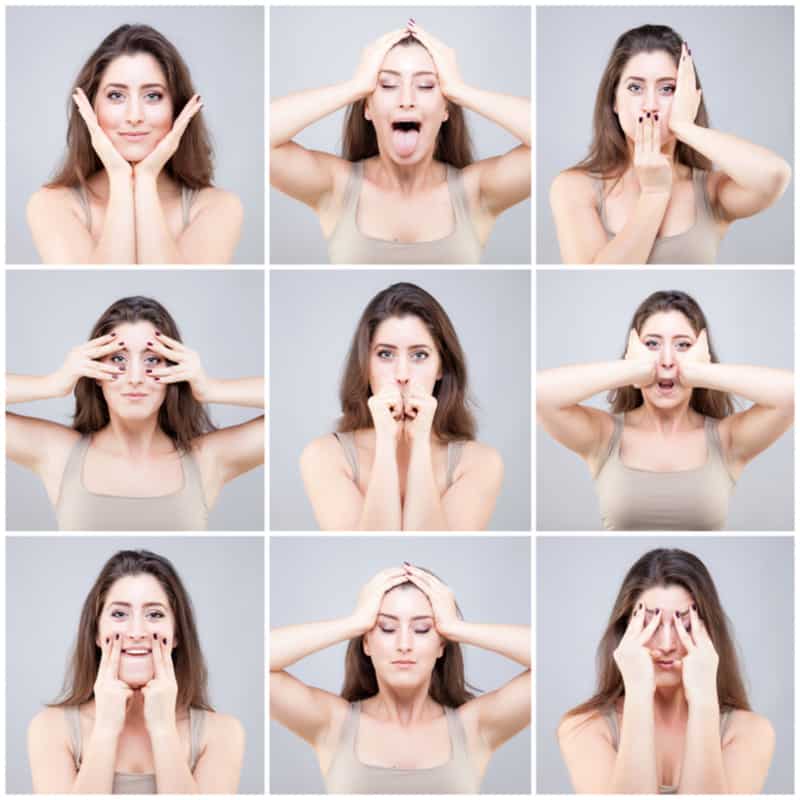

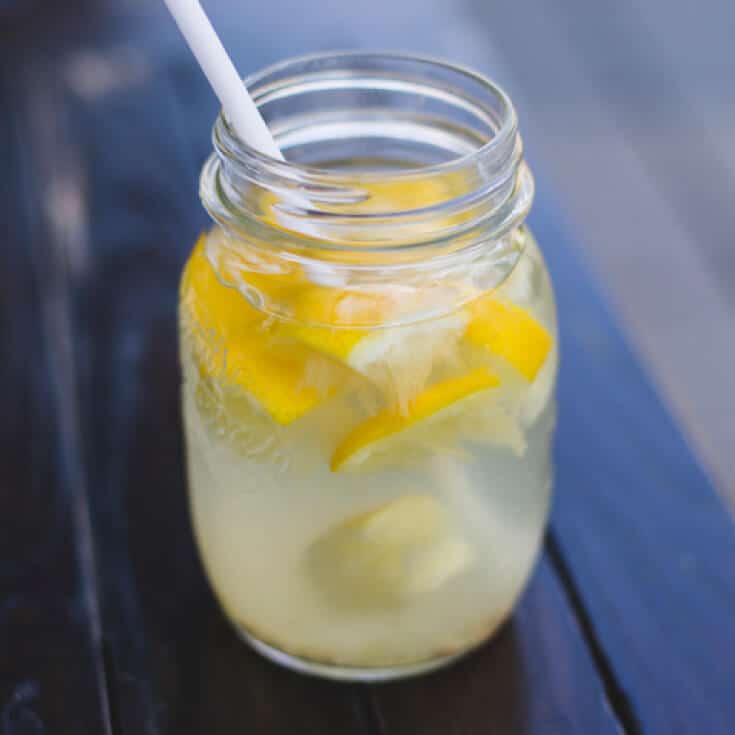
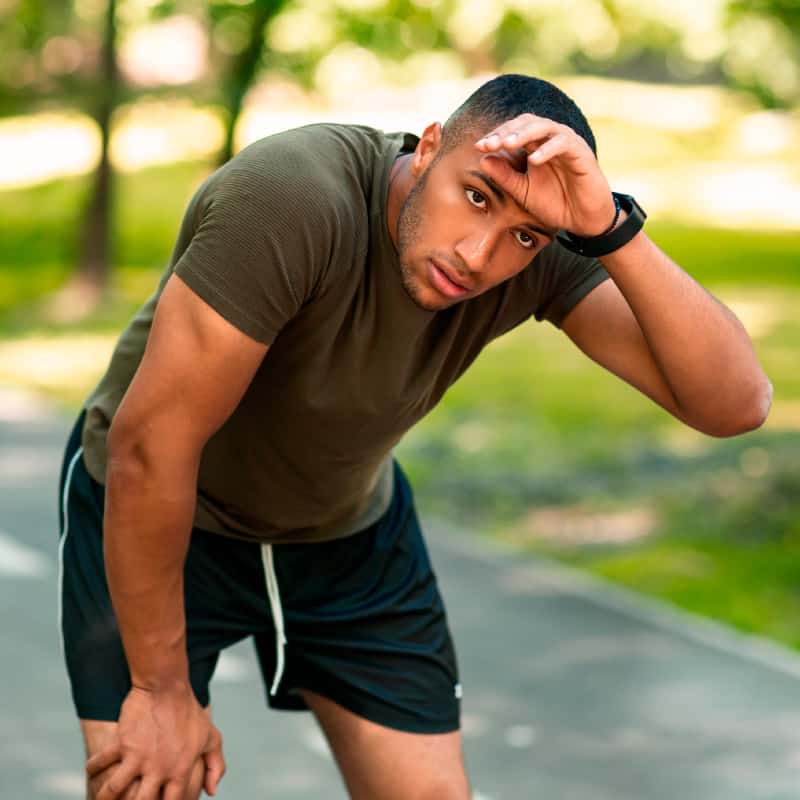
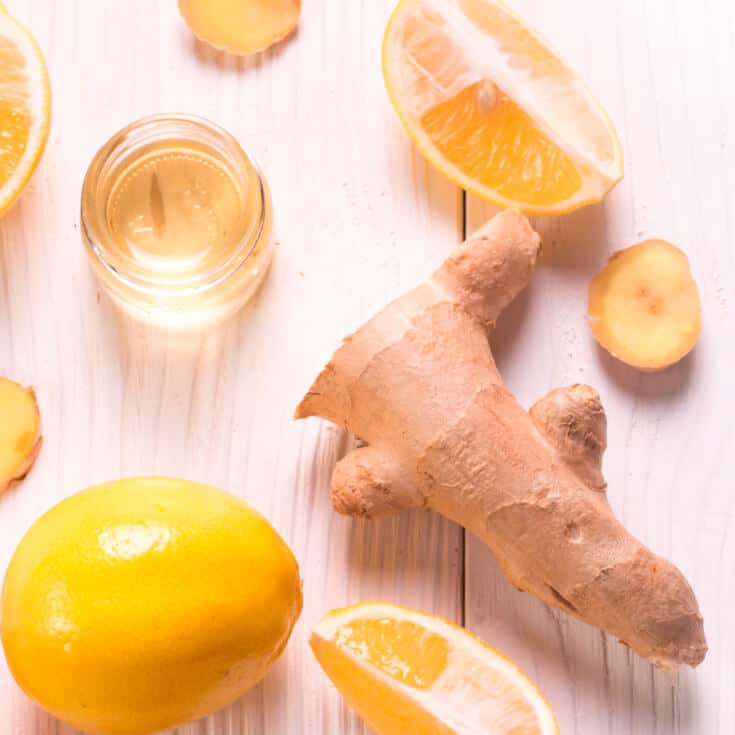

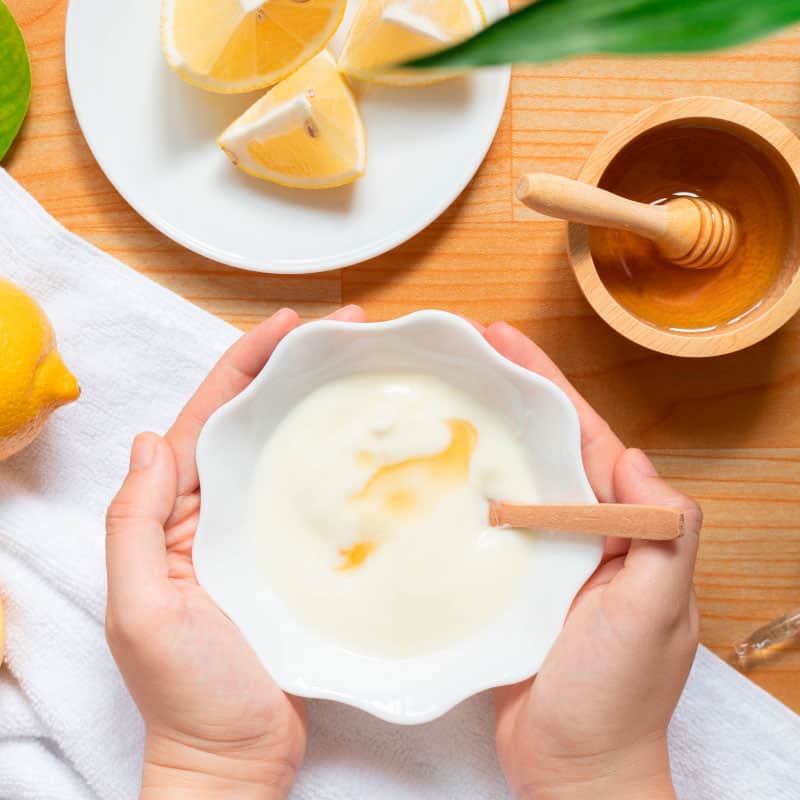

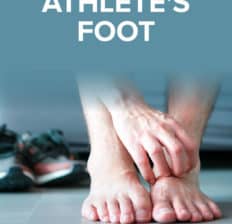
I love Dr Axe!
Can you take ACV internally for athletes foot if the infection has spread to other parts of the body. ie..tidea corpus as opposed to tidea pedia?
Great article. thank you. : )
After reading this article, I made a spray bottle of vinegar and oregano oil. After showering we can spray the floor.
Do you have a suggestion for a natural and highly effective cleaner to apply to the floor that we might swish around with our foot upon exiting the shower?
Thank you.
For the Homemade Antifungal Cream, how much carrier oil do I use with the tea tree oil and oregano oil?
Only a teaspoon or so.
Hi Christina! Go with about a teaspoon or so.
How do I know the Athlet’s food is gone? My foot was very itchy, I have been cleaning and applying Calendula and Alloe Vera (natural), it does not itch anymore but it is peeling still. I will apply the oils as you mention in the article and will let it air, I have been wearing socks even to sleep so not to “infect” anything else. Thank you in advance.